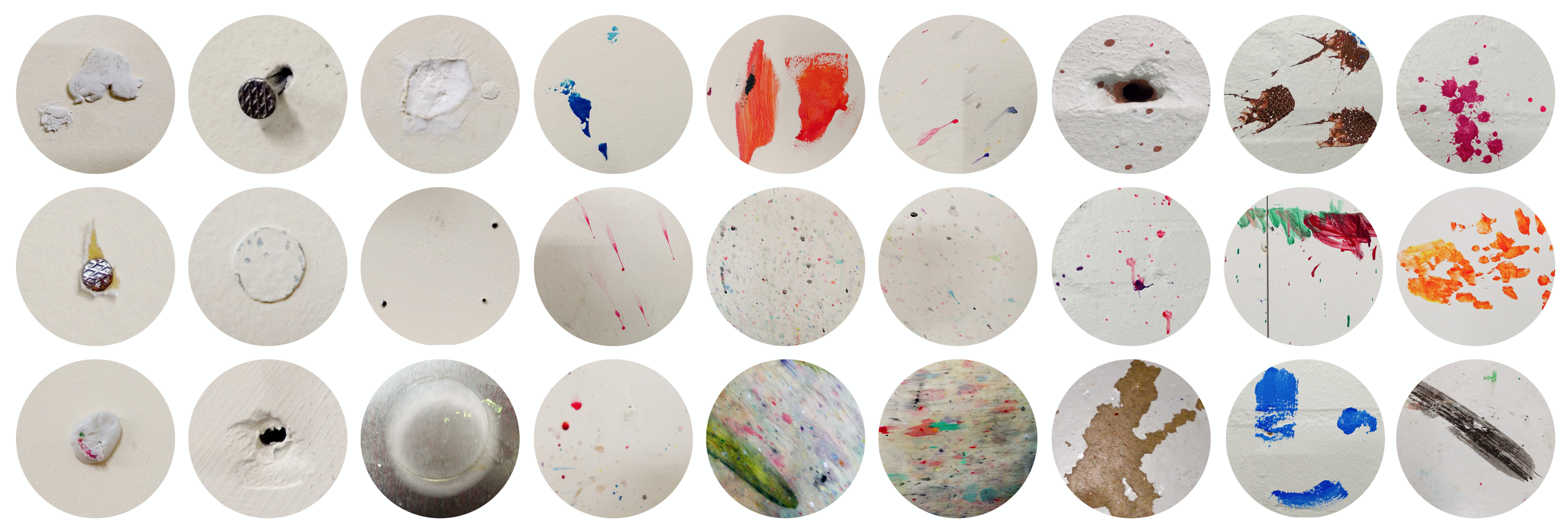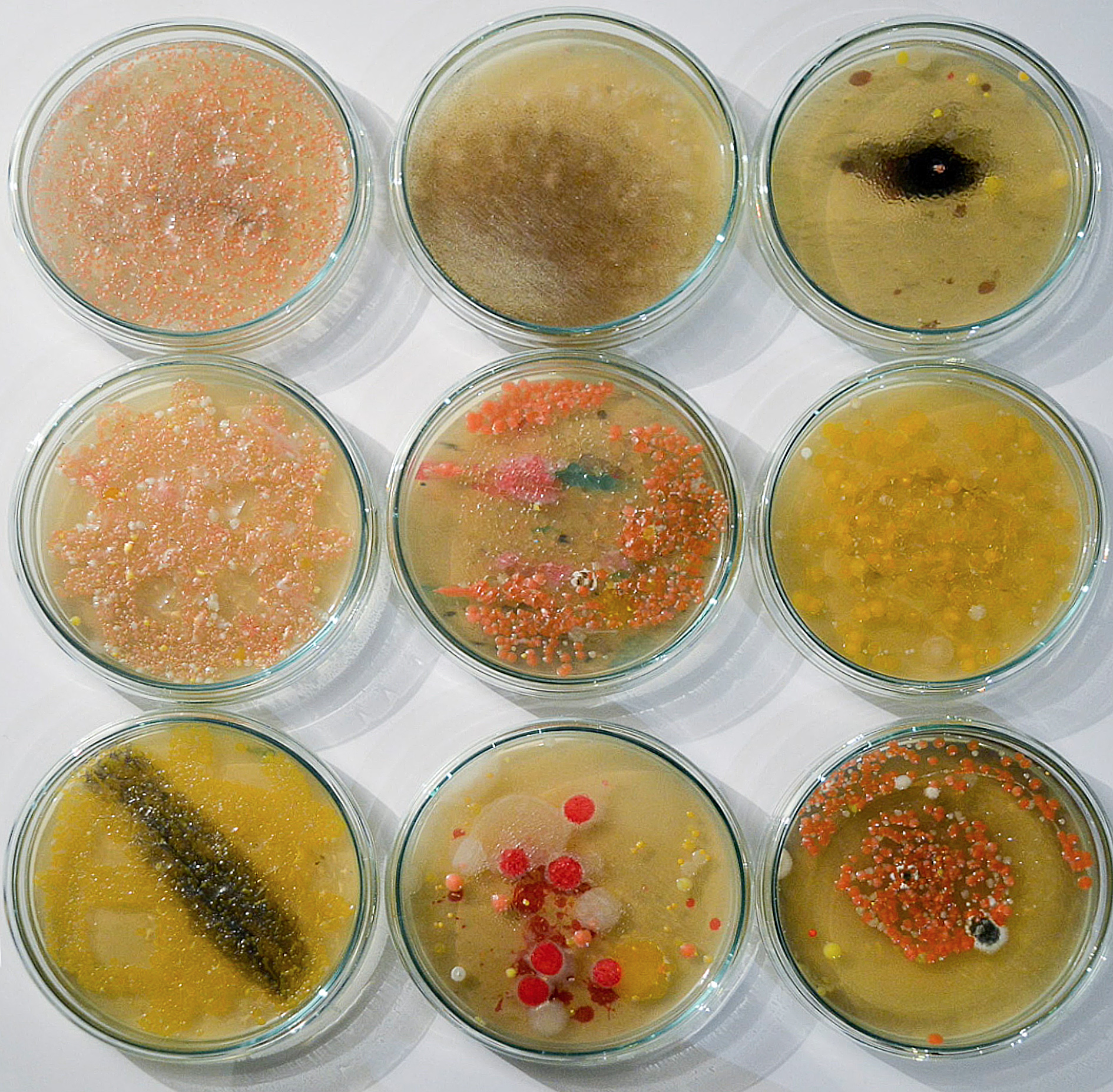Studiome
Studiome utilises photography, mixed media and bacteria to consider the visualisation of invisible artistic processes. I turned the camera back on the Pyramid studio where I have worked alongside learning disabled artists to find evidence of our work: splatters of paint and holes drilled in the walls. These photographs line Petri dishes that are filled with nutrient agar and paint and then inoculated with swabs of bacteria recovered from the areas depicted in the images.
The Petri dish and the artist studio mirror each other as sites of growth. Bacteria are a group of highly diverse organisms that are found everywhere and are crucial to life, yet public perception tends to regard them as harmful because of a small percentage which are pathogenic. They go unnoticed at best or derided at worst. Similarly, social art practitioners often feel an expectation to downplay the relational elements of their work in order to avoid being shifted to other fields such as social care or community development, despite the unique and enriching qualities collaboration brings to the contemporary arts.
John Berger described visibility as “a form of growth” which “continually transforms itself” and is “uncontainable” (1974). Artistic process is not fixed within the exhibition space but is in a perpetual state of emergence. This is particularly true for social/collaborative practices, where the politics and processes of engagement are as important to the form as the resulting art objects.
Studiome encompasses a timelapse of bacteria growth and microscope photography, and when installed also includes the plates themselves and the camera continuing to capture the timelapse, disrupting the idea of a finished piece of work and exposing the process of creation. The title of the piece absorbs both Barthes’ idea of studium, that we interperate the world culturally, and the terms ‘biome’ and ‘microbiome’, which refers to the community of living elements (plants and animals for the former, microbes for the latter) that have evolved in tandem with the conditions of an area and constitute its totality. The collective term for bacteria is culture.




